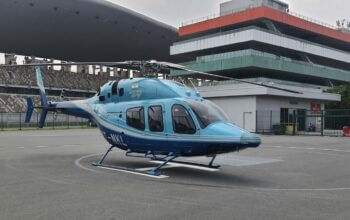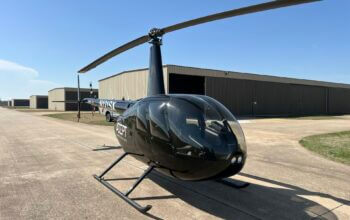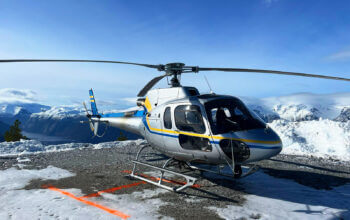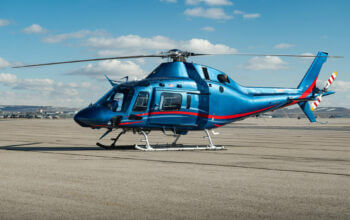Estimated reading time 17 minutes, 35 seconds.
Although total airline profits this year are much higher than expected, profit margins have dropped precipitously, and 2012 may see further declines due to continued economic woes, more competitors and an unsupportive tax framework.
In late September, the International Air Transport Association (IATA) upgraded its industry profit expectations for 2011 to $6.9 billion US, a whopping 72 per cent jump from a midsummer projection of $4 billion. But there no dancing in the aisles yet, because, despite the improved expectations, the profit margin on total industry revenues of $594 billion remained exceptionally weak. Moreover, IATA is expecting significant slippage in 2012, to profits of $4.9 billion on $632 billion in revenues.
Airlines are going to make a little more money in 2011 than we thought. That is good news, said IATA director general Tony Tyler when releasing the revised outlook in Singapore. Given the strong headwinds of high oil prices and economic uncertainty, remaining in the black is a great achievement. But, we should keep the improvement in perspective. The $2.9 billion bottom-line improvement is equal to about a half a per cent of revenue, and the margin is a paltry 1.2 per cent. Airlines are competing in a very tough environment, and 2012 will be even more difficult.
IATA said its forecast is built around projected global economic growth of 2.5 per cent in 2011, and 2.4 per cent in 2012. But, it said whenever GDP growth has slowed below two per cent, the industry has lost money. We will be perilously close to that level at least through 2012, said Tyler. The industry is brittle. Any shock has the potential to put us in the red.
The Canadian Story
George Petsikas, president of the Ottawa, Ont., based National Airlines Council of Canada (NACC), is keenly aware of the situation, not only from his position as a registered lobbyist who presses the federal government on a broad range of issues on behalf of the NACC, but also from his day job as senior director of government and industry affairs at Air Transat. The Montreal, Que., based carrier and its partners in the three-year-old NACC Air Canada, Jazz Aviation and WestJet collectively handled 48 million passengers in 2010 and have 40,000 full-time employees. The industry should be an economic force to be reckoned with, but Petsikas said the current tax policy framework is not supportive.
We’re all in the same boat in terms of having to face down this economic climate, said Petsikas in an interview with Canadian Skies during a visit to the nation capital for meetings with Nav Canada officials. The airline industry is usually a pretty good harbinger for how the rest of the economy is going. We are highly cyclical.
Rapid increases in fuel prices since last winter have also been a major headache. For airlines, fuel represents a disproportionately high chunk of the operating costs pie. We are extremely sensitive to fluctuations. That going to show up in year-end results. Some operators will do better than others. . . . and that certainly will continue.
If there is an upside to the fuel-cost scenario, though, it that prices tend to slide when there is an economic downturn, due to reduced demand as traffic slows, but Petsikas said, with a wry chuckle, That not what we want, either. He said many in the industry, as well as in the tourism sector, are holding their breath, waiting to see how demand will trend in the coming months. Leisure travel is always very sensitive to pressures on household budgets, and uncertainty about jobs takes a toll, as well. Luckily, it a fairly resilient market more resilient than you’d think because there are many Canadians who say, Don’t you dare take away my week on the beach at some sunny clime somewhere.’ Those are the people who keep us going through thick and thin.
Asked for his best guess on where the industry is headed, he replied, There are people who are paid a lot more than I am to try to figure these things out, and that, Even the governor of the Bank of Canada is barely able to tell us what going to happen [with the economy]. In that kind of climate, the NACC is constantly reminding governments and anyone else with a stake, such as service providers, that improved cost controls are critical in what is becoming an increasingly competitive market with ever-tightening margins.
Controlling Costs
Given the number of employees at the carriers and their suppliers, labour costs are clearly a key factor in relieving the squeeze. Labour has to be a partner with management in this process, in understanding that you have to re-invent yourself in this business sometimes, said Petsikas.
He pointed out that the days of Crown-owned flag carriers with decades of operations are generally a thing of the past around the world; most modern operators are only a few years old as corporate entities. Guess what? Five years down the line, you’re already having cost pressures build up in terms of cost structures that a new entrant doesn’t have. If you’re not prepared to re-invent yourself fundamentally in terms of how you do business, how you control your costs, especially your labour costs, you’re going to have a tough time. . . . The leisure travel business in Canada is almost legendary with all the failures that we’ve seen. You’ve got a lot of new competitors out there with far lower cost structures; they are making major inroads. Air Canada, a long-established national carrier, has that challenge.
Newcomers, evidently, are able to compete through a combination of efficiencies and productivity. But, beyond the individual battles are the overall cost issues that are affecting all carriers.
Petsikas said that with fuel costs factored out, the controllables become critical. The air transport industry is a food chain: you have service providers, governments and a lot of third parties who are taking their bites of the pie. Right now, we believe that what the government is taking, in terms of direct and indirect taxation of the industry, is not at all supportive. . . . The airline industry in this country supports broader economic activity. If you’ve got a competitive, viable air transport industry, you’re going to have a viable, competitive national transportation system. He said that this is especially important in such an air-transport-dependent country as Canada.
Petsikas said the NACC last year, in collaboration with the national airports, and tourism and hotel associations, had consultants punch the numbers in a study that showed travel and tourism account for nearly 650,000 jobs in Canada. If you remove the ability of the air transport industry to be more cost competitive and efficient because of the taxation on the system, you’re actually taxing an activity which, in the end, is supporting broad economic activity.
Part of the answer is for government to remove front-end input taxes. The result would be a more productive industry with better cost structures, and the government would more than offset front-end losses as back-end tax revenues improved. We’re a good investment! exclaimed Petsikas. It won’t necessarily pay off next year, but it will pay off. It sound economic theory: you don’t [front-end] tax industries that produce major secondary effects in the economy. But, unfortunately, the long view has been in short supply in government in the last few years.
Petsikas said the industry hopes that with the Conservatives now in a majority in Parliament, until at least 2015, the government will be more willing to take a longer-term view of policy development on the understanding that this would pay off over the medium to long term. Face-time with Transport Minister Denis Lebel clearly would be advantageous. (As an MP with a vast riding in central Quebec and as a former board member of the province association of municipalities and with Infrastructure Quebec, as well as being part of various regional and provincial transport and tourism committees Lebel is keenly aware of the role air transport plays at local, provincial and national levels.)
I don’t doubt it and it our hope that he will engage with us in terms of a proactive review of some of the policies we’re talking about, said Petsikas.
But other ministers come into play, too. A lot of it goes to Finance Minister Jim Flaherty and what we hope is his willingness to look at the business case that we’ve put forward
. . . . It all very nice to go with your hand outstretched, Just give me my tax break and have a nice day.’ In our study last year . . . we clearly tried to make the case that if you cut the input costs, there would be improvements on the back-end in terms of increased economic output.
Stopping the Bleeding
A particular sore point for NACC members and other Canadian operators is the leakage of passengers to airports just south of the border. Somebody remarked recently that 40 per cent of the licence plates in the parking lot at Buffalo, N.Y., are on Ontario cars, said Petsikas.
There also are mounting numbers of Quebec and Ontario plates on cars in Plattsburgh, N.Y., and British Columbia plates in Seattle, Wash.
He said representatives from Plattsburg International Airport which calls itself Montreal U.S. Airport have actually come calling at Air Transat, offering operating costs as low as 10 per cent of what the carrier pays at Montreal airports. Plattsburgh can do that because it has what Petsikas called a dirt cheap infrastructure, including a 12,000-foot runway and an apron the size of Kansas (actually, a little over a square kilometre) that was given to it by the United States Air Force. And, Petsikas feels the governments there are obviously more aware of the economic potential than seems to be the case in Canada, given the funding support the Plattsburg Airport has received, the lack of certain restrictions and the virtual tax-free-zone status for many enterprises there.
But, fundamentally, we want to operate at our airports in Canada, stated Petsikas. We have made huge investments in infrastructure. We have to make those work; we have to get passengers to travel out of Trudeau or Pearson or whatever.
He was particularly scathing about how the federal government still owns the land on which Canada major airports sit, effectively charging whatever rent it wants (see p.10, Canadian Skies, Sept-Oct 2011). It has been, he said, a globally unique arrangement that continues to result in high costs to carriers, which has obviously had to be passed on to customers, exacerbating the aforementioned leakage to American airports.
One wonders, of course, how competitive those border airports would be without huge subsidies from the U.S. government? While there have been some signs that U.S. President Barack Obama administration would like to reduce that obligation as part of dealing with its country trillion-dollar deficit, Petsikas isn’t necessarily against having the Canadian government get back into the airport subsidy business. But, he admitted it could be politically risky. The government generally doesn’t want to be in the business of using taxpayer money to support private-sector business.
Yet, when it was pointed out that the federal government directly and indirectly supports other industries, including aircraft manufacturers and resource companies, Petsikas agreed. I hear you. But, we have to be realistic. Politically, we understand that the days of Air Canada as a Crown corporation are done. We’re not going back to that; I don’t think anybody in the industry really wants that.
Removing Other Barriers
Another bugaboo for the NACC president is user fees, notably the one that ostensibly covers the cost of providing airport security. Most of the Canadian Air Transport Security Authority budget comes from the government, but it is effectively covered by the fees collected from passengers. Petsikas makes a cogent argument that air transport security is really a national security issue, and, as such, should be more broadly funded.
We all know, after 9/11, what can happen if you don’t have safe skies. However, Who actually the beneficiary of a safe and secure aviation system? The actual passenger is the direct beneficiary, but is not the only one. He said that if a couple of abortive attempts to blow up airliners in the years since 9/11 had actually happened, the economic damage would have been catastrophic. The benefits of effective security apply not only to the carriers and airports, but to the tourism and hospitality sectors, and the overall economy, as well. They’re all benefitting from fees paid by the airlines and their customers. Why should we be the only ones who are supporting that cost when the benefits are broader?
Another issue on which the NACC partners have found common cause is the environment, specifically the industry impact on climate change from its two per cent share of greenhouse gas emissions. One of the problems we’ve had as an industry the head of IATA has said it, as well is that we have not put the good word out as well as the guys on the other side.
Petsikas said some extreme critics have suggested quotas on the number of airline trips individuals can take for leisure purposes. We have not yet morphed into North Korea, luckily! he exclaimed. In Canada, aviation is well ahead of a lot of other industries in terms of what we’ve done to reduce our footprint [new engine technologies and efficient aircraft design, better waste management, lessening of chemicals used, and capture and recycling of those that are still required]. If you look at it on a per-passenger basis, we do much better than any other mode of transport.
Notice a spelling mistake or typo?
Click on the button below to send an email to our team and we will get to it as soon as possible.
Report an error or typoHave a story idea you would like to suggest?
Click on the button below to send an email to our team and we will get to it as soon as possible.
Suggest a story











